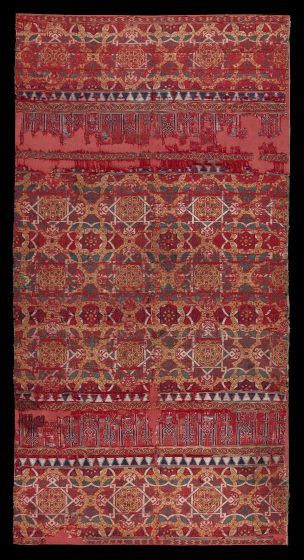The textile industry in Spain represents a significant part of the country’s cultural heritage, characterized by its intricate techniques, diverse materials, and rich designs that reflect the confluence of historical influences throughout the ages.

Fragment of a Spanish textile from historical collections.
Source: Study.com
Spain’s historical connection to textiles dates back to ancient civilizations, notably those of the Iberians and the Romans, who cultivated various fibers such as silk and wool. With deep agricultural roots, the cultivation of cotton and flax began, enhancing the array of materials available for textile production. The introduction of silk to Spain came via the Moors during their period of conquest, bringing with them techniques of spinning and weaving.
The significance of textiles in medieval Spain cannot be understated. The country became a hub of textile innovation and craftsmanship, particularly during the Islamic rule, which spurred the development of richly dyed fabrics and complex weaving patterns. Spanish textiles of this era often featured elaborate designs, integrating motifs from Islamic culture, imparting a distinct aesthetic to the fabrics produced.
Silk fragment with lions and pomegranates – a beautiful example of the artistry in Spanish textiles.
Source: The Metropolitan Museum of Art
The textile industry in Spain evolved significantly during the Renaissance, fueled by increased trade and exploration. Cities such as Valencia and Barcelona became renowned centers for silk production, with Valencian silk gowns gaining popularity among European nobility. This period saw the rise of specialized textiles, including damasks and brocades, characterized by their intricate patterns and luxurious finishes.
The development of the textile industry mirrored Spain’s fluctuating fortunes, influenced by social and economic changes. The 18th century ushered in a decline for Spanish silk production due to competition from France and England, where new technologies allowed for mass production. However, Spain’s textile-making traditions endured, thanks to small-scale artisans who maintained their craft amidst changing markets.

A collection of cotton threads used in traditional Spanish textile crafting.
Source: Study.com
In contemporary times, Spanish textiles have embraced a newfound global interest, combining traditional techniques with modern aesthetics. Regions known for their weaving, such as the Basque Country, continue to produce high-quality fabrics, often utilizing sustainable practices that pay homage to their historical roots. Today, Spanish textiles are celebrated for their vibrant patterns and craftsmanship, appealing to global markets.
Moreover, the intermingling of cultures through trade routes established a unique identity for Spanish textiles. The influence of Moroccan fabrics is evident in patterns and colors, while the historical exchange with the Americas introduced new materials such as cotton into the equation, further enriching Spain’s textile narrative.

Traditional patterns found in Spanish textiles, showcasing historical influences on design.
Source: Cities of Light
In summary, the history of textiles in Spain is a rich tapestry interwoven with cultural exchanges, historical events, and the enduring artistry of its people. From the vibrant silk of medieval Valencia to contemporary sustainable practices, Spanish textiles encapsulate the evolution of craftsmanship in a continually changing world. As seen through the enduring legacy of craftsmanship, the Spanish textile industry remains a testament to the beauty and complexity of its history.